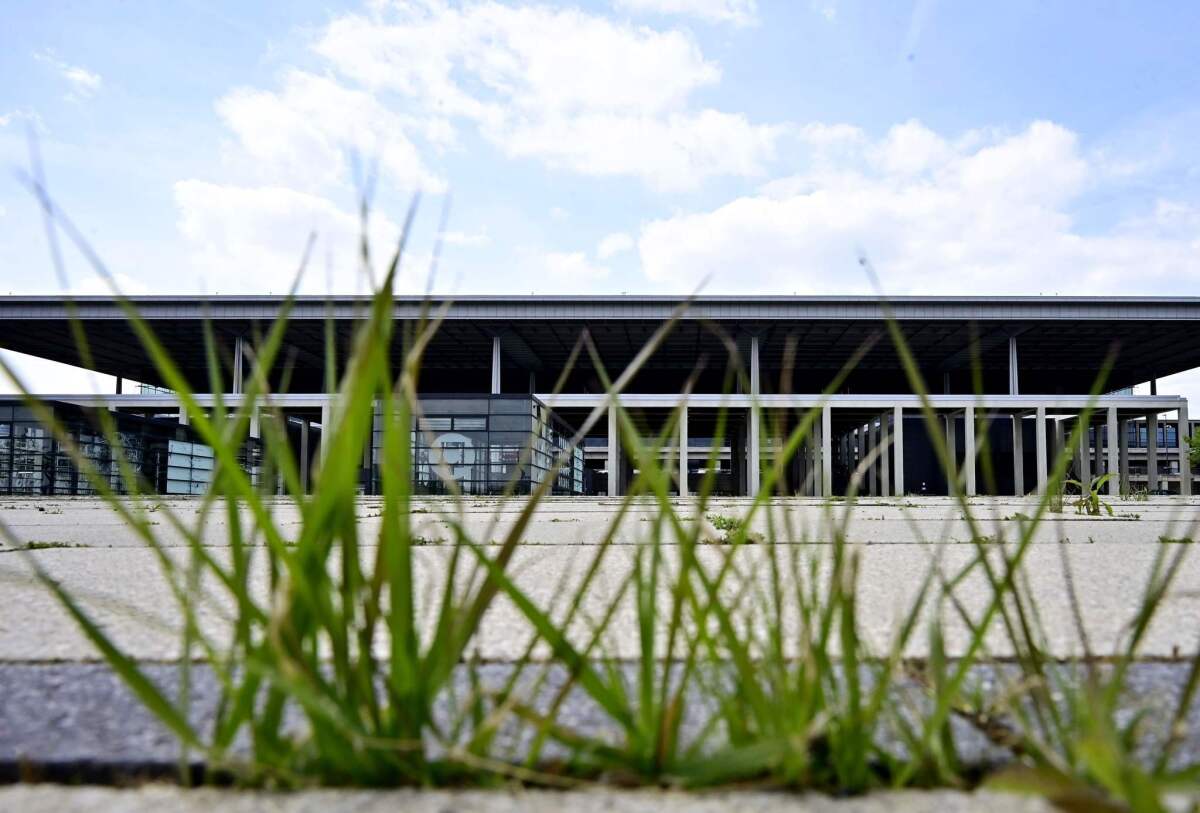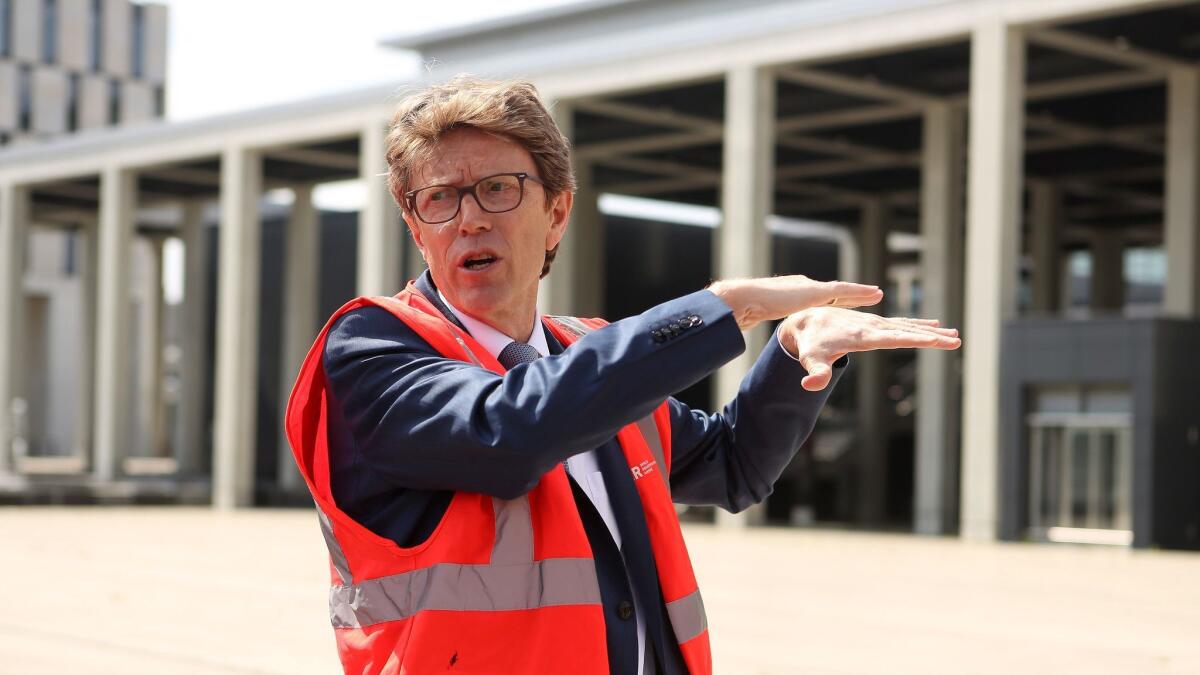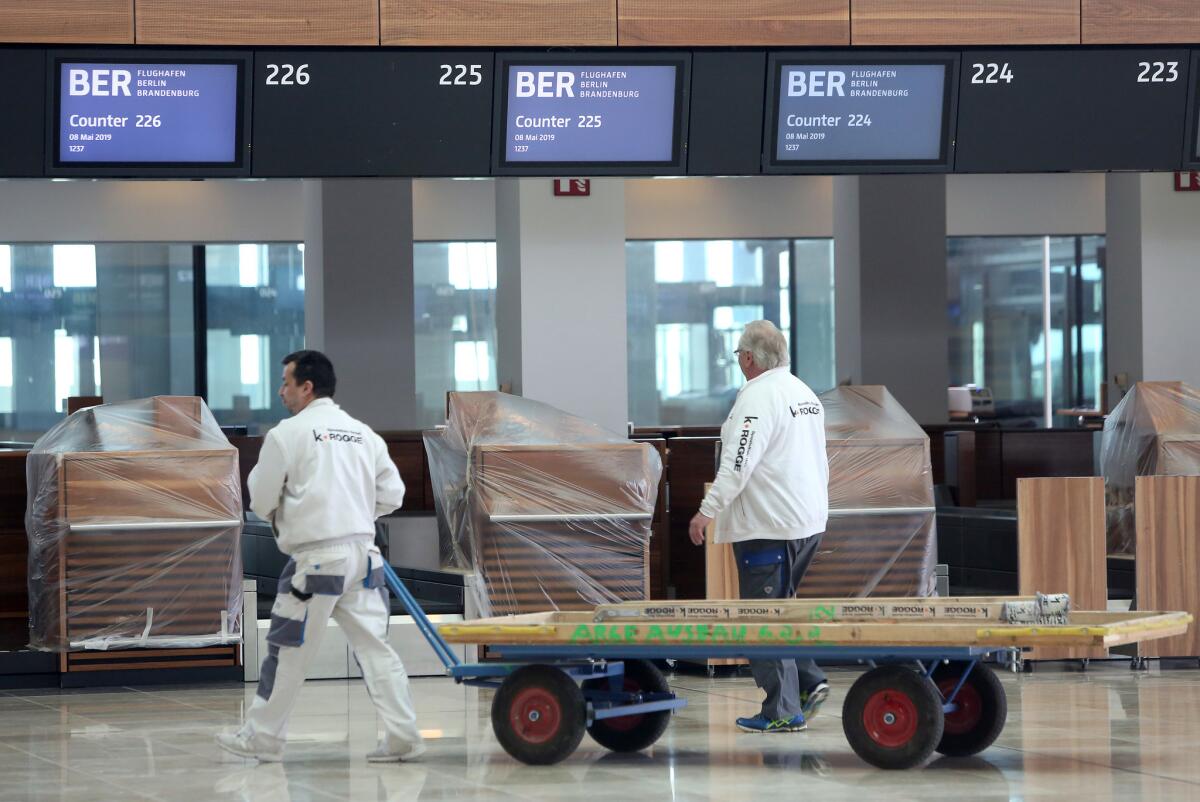Germany’s long-awaited Berlin airport falls short of expectations — such as opening

The arrangements called for champagne and finger food for a giant party with German leaders, dignitaries and 40,000 guests.
Dozens of commercial airlines were weeks away from rerouting their jets to Berlin’s sparkling new state-of-the art international airport.
Then, unexpectedly, fire safety inspectors said the place was not ready to open. Abruptly, the grand opening was canceled.
That was seven years ago.
Many local observers believe Berlin should, by now, have a humming new airport bustling with travelers and traffic, but the space remains an unused concrete colossus on about 3,600 acres on the outskirts of the city. Some see it as a humiliating symbol of failure, considering the country’s reputation for efficiency.
“I just don’t understand why they can’t get it finished,” Karin Hartmann, a retired school principal, said recently. “You see big, beautiful airports everywhere in the world, but we can’t seem to be able to do it here in Berlin. What’s wrong with us?”
Silke Doogs, a Berlin nurse, said she was tired of hearing about delays. “It’s a joke,” Doogs said.
Project officials insist the $8-billion airport paid for by taxpayers is on track to open in October 2020, after some additional construction and inspections are completed. It’s needed to replace smaller, badly outdated Berlin airports, the officials say, adding that the airport — named after former Chancellor Willy Brandt — may still serve, ultimately, as a source of national pride.
The new airport, also known as Berlin Brandenburg airport, is supposed to handle about 41 million travelers in 2021, with estimates increasing to 45 million travelers by 2025. It is expected to create 135,000 jobs in the region within the next 20 years, according to a study published in January by the Assn. of German Chambers of Industry and Commerce, and fuel economic growth.
It’s also expected to provide substantially more options for passengers. Most of the international travelers arriving and departing in Berlin, about 80%, use connecting flights from the two main German international gateways in Frankfurt and Munich or other major European hubs, which can prove time-consuming and costly, officials and local business leaders said.
The delays in opening the airport have been caused by a litany of planning and construction issues, which were compounded over the years as costs escalated and managers came and went.
The initial holdup, officials said, was due to problems with a smoke ventilation system needed in the event of fire. Other construction problems emerged later. Among them: 100 yards of cables were improperly installed and had to be removed; about 4,000 doors were incorrectly numbered; some escalators were not long enough; a computer malfunction meant that construction workers couldn’t turn the lights off in the terminal for months.
Engelbert Luetke Daldrup took over control of the construction project two years ago after four predecessors were fired or quit in frustration. He is loath to point fingers at those responsible before him but in general blames poor planning in the earlier stages for the construction mistakes.
“It’s my job to put an end to this embarrassment,” Luetke Daldrup said while showing journalists the construction site this month. “It’s not a glorious chapter for Berlin by any means when a major infrastructure project like this couldn’t be finished anywhere near on time and on budget.”

Costs have risen from $3 billion to $8 billion, he said. The airport’s opening was pushed back from 2007 to 2011, then to 2012, 2013, 2014 and 2017 for what airport authorities described as construction deficiencies.
“The time needed to build this was underestimated,” Luetke Daldrup said. “We’re doing everything we can to get the job done.”
Dieter Faulenbach da Costa, an architect and engineer who has helped build 45 airports around the world over the last four decades, said the project appeared overwhelming for some of the planning officials and architects.
Faulenbach da Costa said in an interview that he doesn’t think the new terminal will pass tough building code inspections and that airport authorities should have cut their losses in 2012 by demolishing what was there and starting over.
A similarly gloomy view was shared last year by a Lufthansa executive, Thorsten Dirks, who predicted the new structure would have to be torn down.
Rima Dapous, a 49-year-old researcher from Berlin, was among those who said it would make sense to pull the plug on public spending for the airport.
“It’s a graveyard of funds wasted and omnishambles,” Dapous said. “The project should be stopped and the building used for something else.”
During the recent tour of the construction site, small teams of helmet-clad construction workers were scattered throughout the cavernous building. The terminal has many overhead sprinklers — a veritable doubling to 80,000 total — in response to fire safety problems that contributed to the canceled opening seven years ago.

But the tour seemed oddly similar to one held for journalists seven years ago, when airport officials were brimming with confidence that the complex would open June 3, 2012. The airport in many ways appeared closer to completion back then because many of the shops and restaurants renting floor space had already set up their businesses in the terminal to get ready for the opening. The shops and their wares were removed during the reconstruction phase but are expected to return.
Outside the terminal building, weeds showed through gaps in the concrete walkways.
Luetke Daldrup said he understood why many people doubt that the project will ever be successful.
“Anyone who has postponed the opening so often cannot really expect that people wouldn’t be skeptical. I get where they’re coming from,” he said. “The only thing we could do was try to put an end to this unholy mess and get it opened on time. We’ve worked hard and we’re nearly there now.”
Kirschbaum is a special correspondent.
More to Read
Start your day right
Sign up for Essential California for news, features and recommendations from the L.A. Times and beyond in your inbox six days a week.
You may occasionally receive promotional content from the Los Angeles Times.






